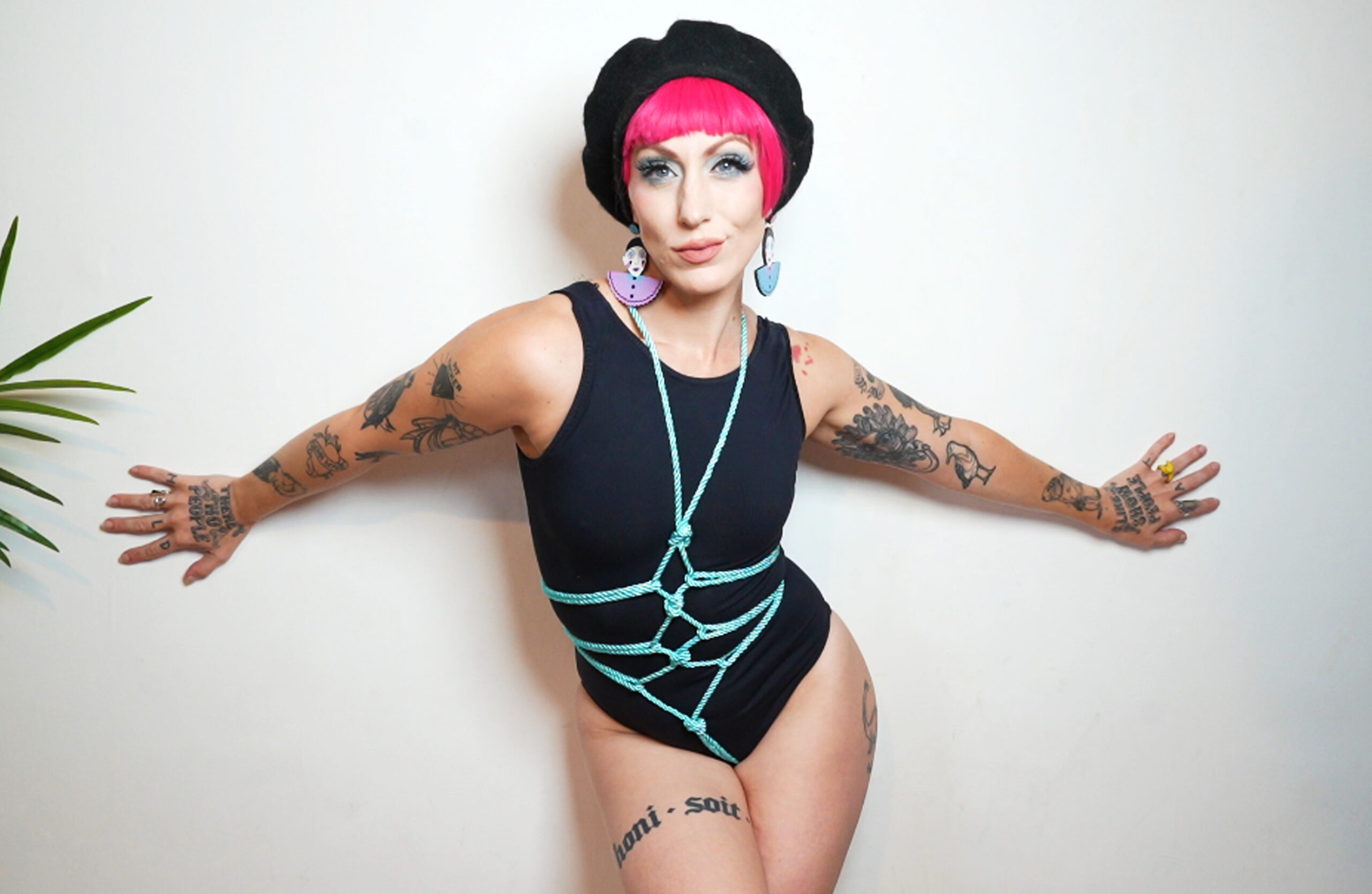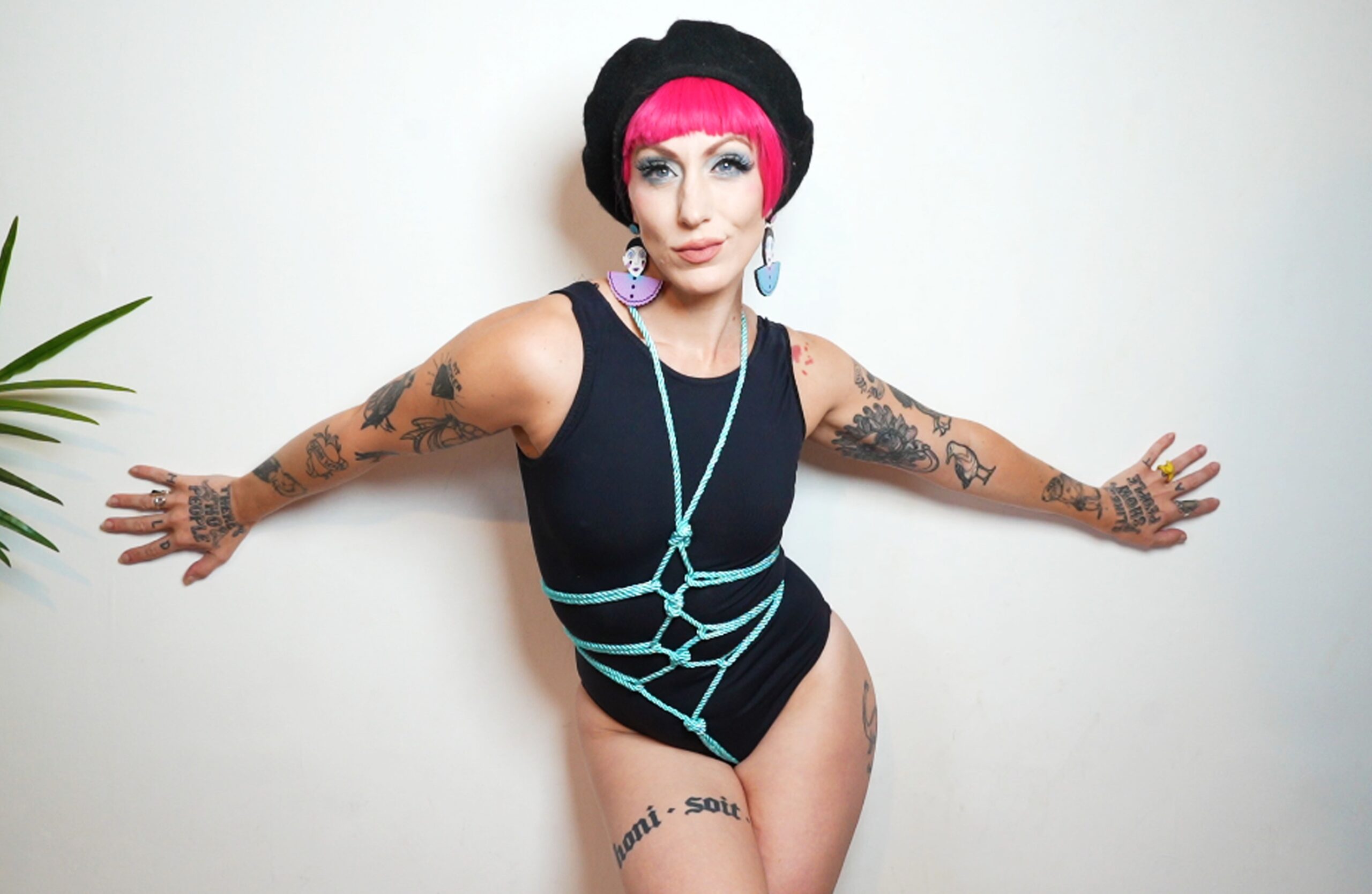Pansexuality And The Fluidity Of Sexual Attraction Across All Genders

Understanding Pansexuality
Pansexuality is a sexual orientation characterized by attraction to people regardless of their gender identity or expression. It emphasizes the fluidity of sexual attraction, recognizing that individuals can be drawn to others based on a range of qualities beyond gender. Understanding pansexuality involves acknowledging and respecting the diverse ways in which individuals experience and express their sexuality.
Definition and Spectrum
Pansexuality encompasses a broad spectrum of experiences. While often simplified as “attraction to all genders,” it’s important to recognize that each individual’s pansexual identity is unique. Some pansexual people may be attracted to all gender identities, while others might find themselves drawn more strongly to certain genders or have fluid attractions that shift over time. The core principle of pansexuality lies in the rejection of rigid gender boundaries as a determinant of attraction.
Understanding pansexuality requires moving beyond binary notions of sexuality and embracing the diversity within human experience. It’s about recognizing that gender is a spectrum, and attraction can flow along with it. This means respecting individuals’ self-identified genders and honoring their unique expressions of love and desire.
Ultimately, understanding pansexuality involves fostering an inclusive and accepting environment where all individuals feel comfortable expressing their true selves without fear of judgment or discrimination.
Core Values: Inclusivity and Respect
Pansexuality is a sexual orientation characterized by attraction to people regardless of their gender identity or expression. It emphasizes the fluidity of sexual attraction, recognizing that individuals can be drawn to others based on a range of qualities beyond gender. nipple torture
Pansexuality encompasses a broad spectrum of experiences. While often simplified as “attraction to all genders,” it’s important to recognize that each individual’s pansexual identity is unique. Some pansexual people may be attracted to all gender identities, while others might find themselves drawn more strongly to certain genders or have fluid attractions that shift over time. The core principle of pansexuality lies in the rejection of rigid gender boundaries as a determinant of attraction.
Understanding pansexuality requires moving beyond binary notions of sexuality and embracing the diversity within human experience. It’s about recognizing that gender is a spectrum, and attraction can flow along with it. This means respecting individuals’ self-identified genders and honoring their unique expressions of love and desire.
Ultimately, understanding pansexuality involves fostering an inclusive and accepting environment where all individuals feel comfortable expressing their true selves without fear of judgment or discrimination.

Distinguishing Pansexuality from Other Sexual Orientations
Pansexuality is a sexual orientation characterized by attraction to people regardless of their gender identity or expression. It emphasizes the fluidity of sexual attraction, recognizing that individuals can be drawn to others based on a range of qualities beyond gender. Understanding pansexuality involves acknowledging and respecting the diverse ways in which individuals experience and express their sexuality.
Pansexuality encompasses a broad spectrum of experiences. While often simplified as “attraction to all genders,” it’s important to recognize that each individual’s pansexual identity is unique. Some pansexual people may be attracted to all gender identities, while others might find themselves drawn more strongly to certain genders or have fluid attractions that shift over time. The core principle of pansexuality lies in the rejection of rigid gender boundaries as a determinant of attraction.
Understanding pansexuality requires moving beyond binary notions of sexuality and embracing the diversity within human experience. It’s about recognizing that gender is a spectrum, and attraction can flow along with it. This means respecting individuals’ self-identified genders and honoring their unique expressions of love and desire.
Ultimately, understanding pansexuality involves fostering an inclusive and accepting environment where all individuals feel comfortable expressing their true selves without fear of judgment or discrimination.
The Fluidity of Sexual Attraction
Pansexuality is a sexual orientation characterized by attraction to people regardless of their gender identity or expression. It emphasizes the fluidity of sexual attraction, recognizing that individuals can be drawn to others based on a range of qualities beyond gender. Understanding pansexuality involves acknowledging and respecting the diverse ways in which individuals experience and express their sexuality.
Pansexuality encompasses a broad spectrum of experiences. While often simplified as “attraction to all genders,” it’s important to recognize that each individual’s pansexual identity is unique. Some pansexual people may be attracted to all gender identities, while others might find themselves drawn more strongly to certain genders or have fluid attractions that shift over time. The core principle of pansexuality lies in the rejection of rigid gender boundaries as a determinant of attraction.
Understanding pansexuality requires moving beyond binary notions of sexuality and embracing the diversity within human experience. It’s about recognizing that gender is a spectrum, and attraction can flow along with it. This means respecting individuals’ self-identified genders and honoring their unique expressions of love and desire.
Ultimately, understanding pansexuality involves fostering an inclusive and accepting environment where all individuals feel comfortable expressing their true selves without fear of judgment or discrimination.
Beyond the Binary: Gender as a Spectrum
Pansexuality is a sexual orientation characterized by attraction to people regardless of their gender identity or expression. It emphasizes the fluidity of sexual attraction, recognizing that individuals can be drawn to others based on a range of qualities beyond gender. Understanding pansexuality involves acknowledging and respecting the diverse ways in which individuals experience and express their sexuality.
Pansexuality encompasses a broad spectrum of experiences. While often simplified as “attraction to all genders,” it’s important to recognize that each individual’s pansexual identity is unique. Some pansexual people may be attracted to all gender identities, while others might find themselves drawn more strongly to certain genders or have fluid attractions that shift over time. The core principle of pansexuality lies in the rejection of rigid gender boundaries as a determinant of attraction.
Understanding pansexuality requires moving beyond binary notions of sexuality and embracing the diversity within human experience. It’s about recognizing that gender is a spectrum, and attraction can flow along with it. This means respecting individuals’ self-identified genders and honoring their unique expressions of love and desire.
Ultimately, understanding pansexuality involves fostering an inclusive and accepting environment where all individuals feel comfortable expressing their true selves without fear of judgment or discrimination.
Personal Experiences with Fluid Attraction
The fluidity of sexual attraction is a key concept in understanding pansexuality. It recognizes that individuals’ attractions can evolve and change over time, not being confined to fixed categories or labels.
- Some people may find themselves drawn to a variety of genders throughout their lives, while others may experience more consistent attractions.
- This fluidity doesn’t diminish the validity of anyone’s experiences or identities; it simply acknowledges the complexity and diversity of human attraction.
- Embracing this fluidity means creating spaces where individuals feel safe to explore and express their attractions without fear of judgment or pressure to conform to rigid norms.
Cultural Influences on Perceptions of Sexuality
Cultural influences play a significant role in shaping perceptions of sexuality, including pansexuality. Societal norms, religious beliefs, and prevailing cultural values can influence how people understand and accept different sexual orientations.
In some cultures, traditional gender roles and expectations are strongly emphasized, which may lead to resistance or misunderstanding towards non-normative expressions of sexuality. Conversely, cultures that embrace diversity and inclusivity are more likely to foster acceptance and understanding of pansexuality.
It’s important to recognize that cultural perceptions of sexuality are not static; they evolve over time as societies become more informed and accepting. Education, open dialogue, and representation in media can contribute to greater understanding and tolerance towards diverse sexual orientations, including pansexuality.
Challenges and Stigmas Faced by Pansexual Individuals
Pansexual individuals often face unique challenges and stigmas due to the misunderstanding and lack of awareness surrounding their identity. Societal norms that reinforce binary gender constructs can lead to confusion and prejudice, making it difficult for pansexual people to express themselves openly and authentically.
The fluidity of pansexual attraction can be misconstrued or perceived as indecisive, leading to questions about commitment and stability in relationships. Stereotypes and harmful generalizations about pansexuality can contribute to feelings of isolation and invisibility within broader LGBTQ+ communities. Additionally, lack of representation and visibility of pansexual individuals in media and popular culture perpetuates a cycle of ignorance and reinforces negative perceptions.
Misconceptions and Stereotypes

Pansexual individuals often face unique challenges and stigmas due to the misunderstanding and lack of awareness surrounding their identity. Societal norms that reinforce binary gender constructs can lead to confusion and prejudice, making it difficult for pansexual people to express themselves openly and authentically.
The fluidity of pansexual attraction can be misconstrued or perceived as indecisive, leading to questions about commitment and stability in relationships. Stereotypes and harmful generalizations about pansexuality can contribute to feelings of isolation and invisibility within broader LGBTQ+ communities. Additionally, lack of representation and visibility of pansexual individuals in media and popular culture perpetuates a cycle of ignorance and reinforces negative perceptions.
These challenges can have a profound impact on the mental health and well-being of pansexual individuals, leading to anxiety, depression, and feelings of shame or self-doubt. It’s crucial to address these stigmas and create a more inclusive and understanding environment where pansexual people feel safe to be themselves without fear of judgment or discrimination.
Internalized Homophobia and Biphobia
Pansexual individuals often face unique challenges and stigmas due to the misunderstanding and lack of awareness surrounding their identity. Societal norms that reinforce binary gender constructs can lead to confusion and prejudice, making it difficult for pansexual people to express themselves openly and authentically.
The fluidity of pansexual attraction can be misconstrued or perceived as indecisive, leading to questions about commitment and stability in relationships. Stereotypes and harmful generalizations about pansexuality can contribute to feelings of isolation and invisibility within broader LGBTQ+ communities. Additionally, lack of representation and visibility of pansexual individuals in media and popular culture perpetuates a cycle of ignorance and reinforces negative perceptions.
These challenges can have a profound impact on the mental health and well-being of pansexual individuals, leading to anxiety, depression, and feelings of shame or self-doubt. Internalized homophobia and biphobia can further compound these difficulties. Individuals may internalize negative societal messages about their attractions, leading to feelings of guilt, self-loathing, or a denial of their true identities.
Overcoming internalized homophobia and biphobia requires conscious effort, self-compassion, and a supportive environment. Access to affirming resources such as therapy, support groups, and LGBTQ+ communities can be invaluable in helping pansexual individuals challenge negative beliefs and embrace their authentic selves.
Lack of Representation in Media and Society
Pansexual individuals often face unique challenges and stigmas due to the misunderstanding and lack of awareness surrounding their identity. Societal norms that reinforce binary gender constructs can lead to confusion and prejudice, making it difficult for pansexual people to express themselves openly and authentically.
The fluidity of pansexual attraction can be misconstrued or perceived as indecisive, leading to questions about commitment and stability in relationships. Stereotypes and harmful generalizations about pansexuality can contribute to feelings of isolation and invisibility within broader LGBTQ+ communities. Additionally, lack of representation and visibility of pansexual individuals in media and popular culture perpetuates a cycle of ignorance and reinforces negative perceptions.
These challenges can have a profound impact on the mental health and well-being of pansexual individuals, leading to anxiety, depression, and feelings of shame or self-doubt. It’s crucial to address these stigmas and create a more inclusive and understanding environment where pansexual people feel safe to be themselves without fear of judgment or discrimination.
A lack of representation in media and popular culture further exacerbates these issues. The limited portrayals of pansexual characters often rely on stereotypes or fail to accurately depict the diversity of pansexual experiences. This lack of visibility can contribute to feelings of invisibility and isolation for pansexual individuals, making it harder for them to connect with others and feel understood.
Greater representation in media, both in front of and behind the camera, is essential for creating a more inclusive and accepting society. Accurate and nuanced portrayals of pansexual characters can help challenge stereotypes, foster empathy, and promote understanding among the wider population.
Celebrating Pansexuality: Embracing Diversity
Pansexuality is a vibrant and multifaceted expression of love and attraction that recognizes the beauty of diversity in gender identity and expression. It celebrates the fluidity of human connection, where individuals find themselves drawn to people regardless of their gender. Embracing pansexuality means acknowledging and respecting the full spectrum of human experiences, recognizing that attraction can flow beyond rigid societal norms and definitions.
Visibility and Advocacy Efforts
Celebrating Pansexuality: Embracing Diversity, Visibility and Advocacy Efforts
Pansexuality is a sexual orientation characterized by attraction to people regardless of their gender identity or expression. It emphasizes the fluidity of sexual attraction, recognizing that individuals can be drawn to others based on a range of qualities beyond gender. Understanding pansexuality involves acknowledging and respecting silicone penis sleeve the diverse ways in which individuals experience and express their sexuality.
Pansexuality encompasses a broad spectrum of experiences. While often simplified as “attraction to all genders,” it’s important to recognize that each individual’s pansexual identity is unique. cock straps Some pansexual people may be attracted to all gender identities, while others might find themselves drawn more strongly to certain genders or have fluid attractions that shift over time. The core principle of pansexuality lies in the rejection of rigid gender boundaries as a determinant of attraction.
Understanding pansexuality requires moving beyond binary notions of sexuality and embracing the diversity within human experience. bondage hoods UK It’s about recognizing that gender is a spectrum, and attraction can flow along with it. This means respecting individuals’ self-identified genders and honoring their unique expressions of love and desire. Ultimately, understanding pansexuality involves fostering an inclusive and accepting environment where all individuals feel comfortable expressing their true selves without fear of judgment or discrimination.
Celebrating pansexuality means actively working to create a more equitable and just world for all gender identities. This involves advocating for policies that protect the rights of LGBTQ+ individuals, challenging discriminatory language and attitudes, and promoting visibility and representation of pansexual people in media, education, and public life.
It also means supporting organizations that work to empower pansexual communities and provide resources for those who are struggling with coming to terms with their identity or facing societal prejudice.
Through continued dialogue, education, and activism, we can create a world where pansexuality is celebrated as a valid and beautiful expression of human sexuality.
Creating Inclusive Spaces
Pansexuality is a vibrant and multifaceted expression of love and attraction that recognizes the beauty of diversity in gender identity and expression. It celebrates the fluidity of human connection, where individuals find themselves drawn to people regardless of their gender. Embracing pansexuality means acknowledging and respecting the full spectrum of human experiences, recognizing that attraction can flow beyond rigid societal norms and definitions.
Celebrating Pansexuality: Embracing Diversity, Visibility and Advocacy Efforts
Pansexuality is a sexual orientation characterized by attraction to people regardless of their gender identity or expression. It emphasizes the fluidity of sexual attraction, recognizing that individuals can be drawn to others based on a range of qualities beyond gender. Dream Toys couples Understanding pansexuality involves acknowledging and respecting the diverse ways in which individuals experience and express their sexuality.
Pansexuality encompasses a broad spectrum of experiences. While often simplified as “attraction to all genders,” it’s important to recognize that each individual’s pansexual identity is unique. Some pansexual people may be attracted to all gender identities, while others might find themselves drawn more strongly to certain genders or have fluid attractions that shift over time. The core principle of pansexuality lies in the rejection of rigid gender boundaries as a determinant of attraction.
Understanding pansexuality requires moving beyond binary notions of sexuality and embracing the diversity within human experience. It’s about recognizing that gender is a spectrum, and attraction can flow along with it. This means respecting individuals’ self-identified genders and honoring their unique expressions of love and desire. Ultimately, understanding pansexuality involves fostering an inclusive and accepting environment where all individuals feel comfortable expressing their true selves without fear of judgment or discrimination.
Celebrating pansexuality means actively working to create a more equitable and just world for all gender identities. This involves advocating for policies that protect the rights of LGBTQ+ individuals, challenging discriminatory language and attitudes, and promoting visibility and representation of pansexual people in media, education, and public life.
It also means supporting organizations that work to empower pansexual communities and provide resources for those who are struggling with coming to terms with their identity or facing societal prejudice. Through continued dialogue, education, and activism, we can create a world where pansexuality is celebrated as a valid and beautiful expression of human sexuality.
The Importance of Education and Understanding
Pansexuality is a sexual orientation characterized by attraction to people regardless of their gender identity or expression. It emphasizes the fluidity of sexual attraction, recognizing that individuals can be drawn to others based on a range of qualities beyond gender. Understanding pansexuality involves acknowledging and respecting the diverse ways in which individuals experience and express their sexuality.
Pansexuality encompasses a broad spectrum of experiences. While often simplified as “attraction to all genders,” it’s important to recognize that each individual’s pansexual identity is unique. Some pansexual people may be attracted to all gender identities, while others might find themselves drawn more strongly to certain genders or have fluid attractions that shift over time. The core principle of pansexuality lies in the rejection of rigid gender boundaries as a determinant of attraction.
Understanding pansexuality requires moving beyond binary notions of sexuality and embracing the diversity within human experience. It’s about recognizing that gender is a spectrum, and attraction can flow along with it. This means respecting individuals’ self-identified genders and honoring their unique expressions of love and desire.
Ultimately, understanding pansexuality involves fostering an inclusive and accepting environment where all individuals feel comfortable expressing their true selves without fear of judgment or discrimination. This requires challenging societal norms that perpetuate stereotypes and misinformation about pansexuality. Open dialogue, education, and representation are crucial for promoting greater understanding and acceptance.
See the full report here
Explore the blog to find out more




































